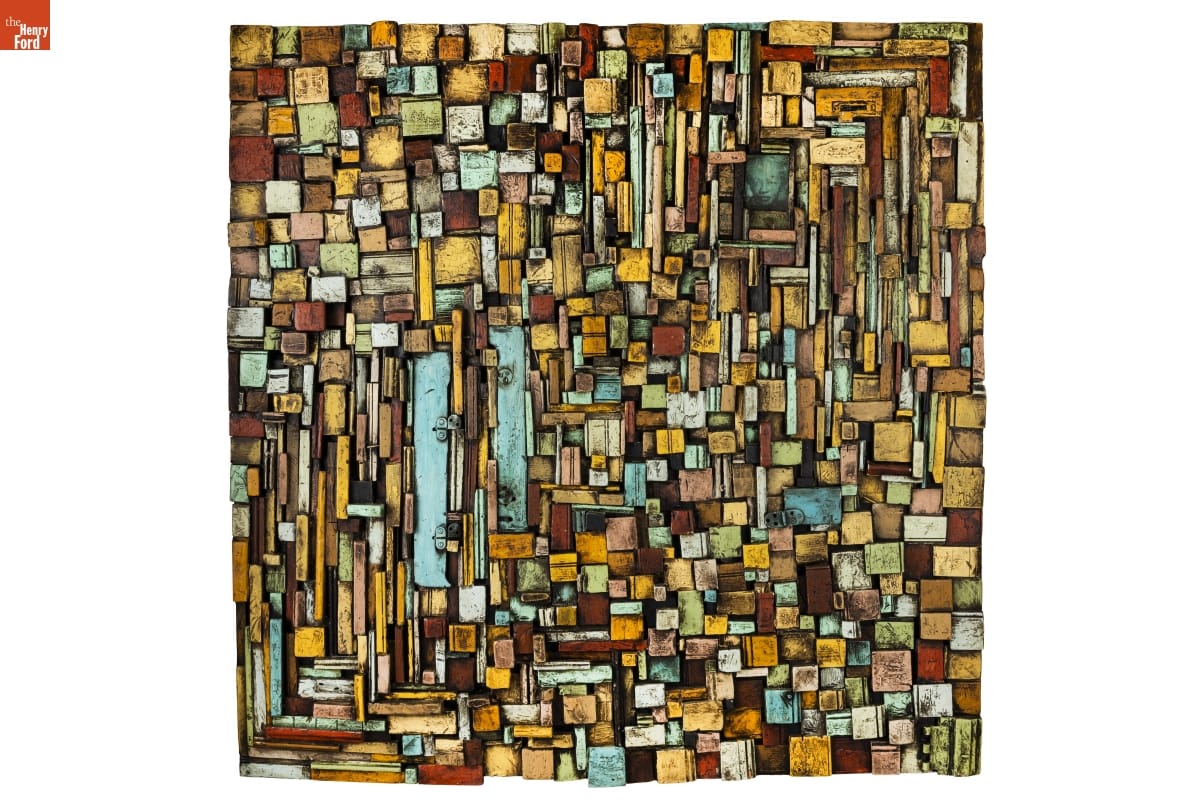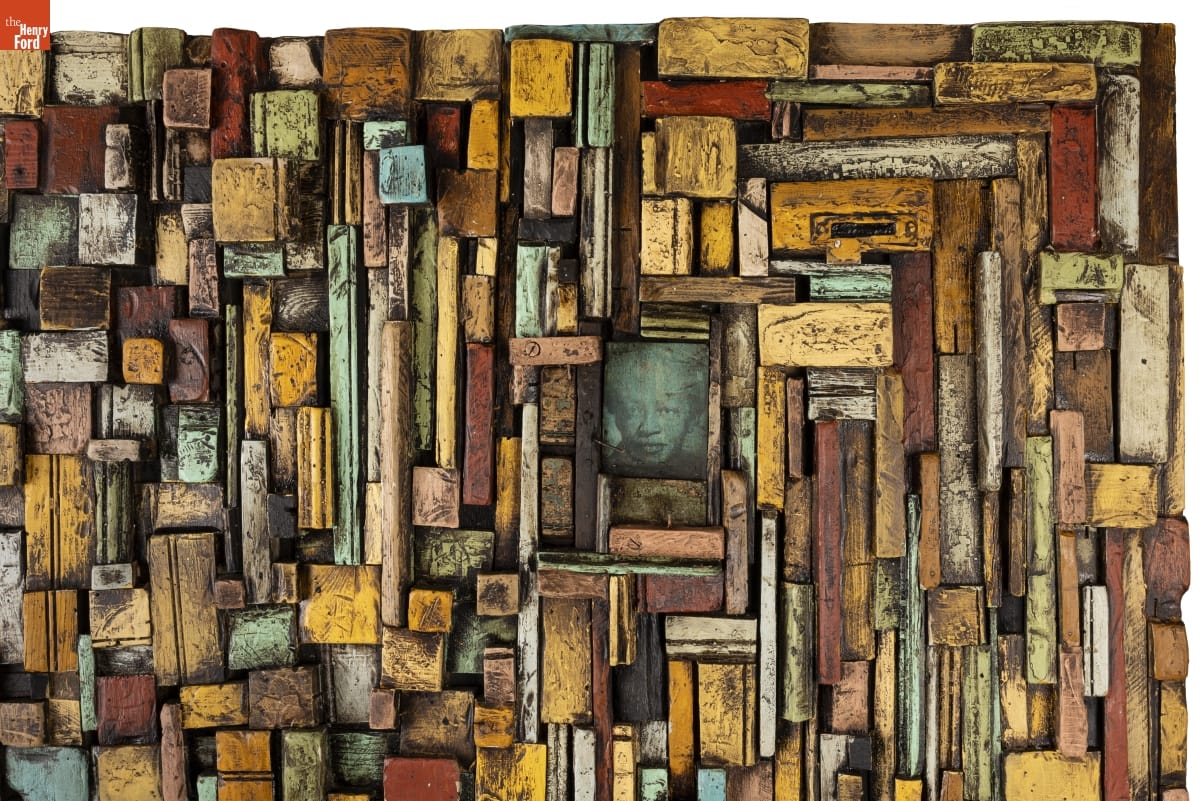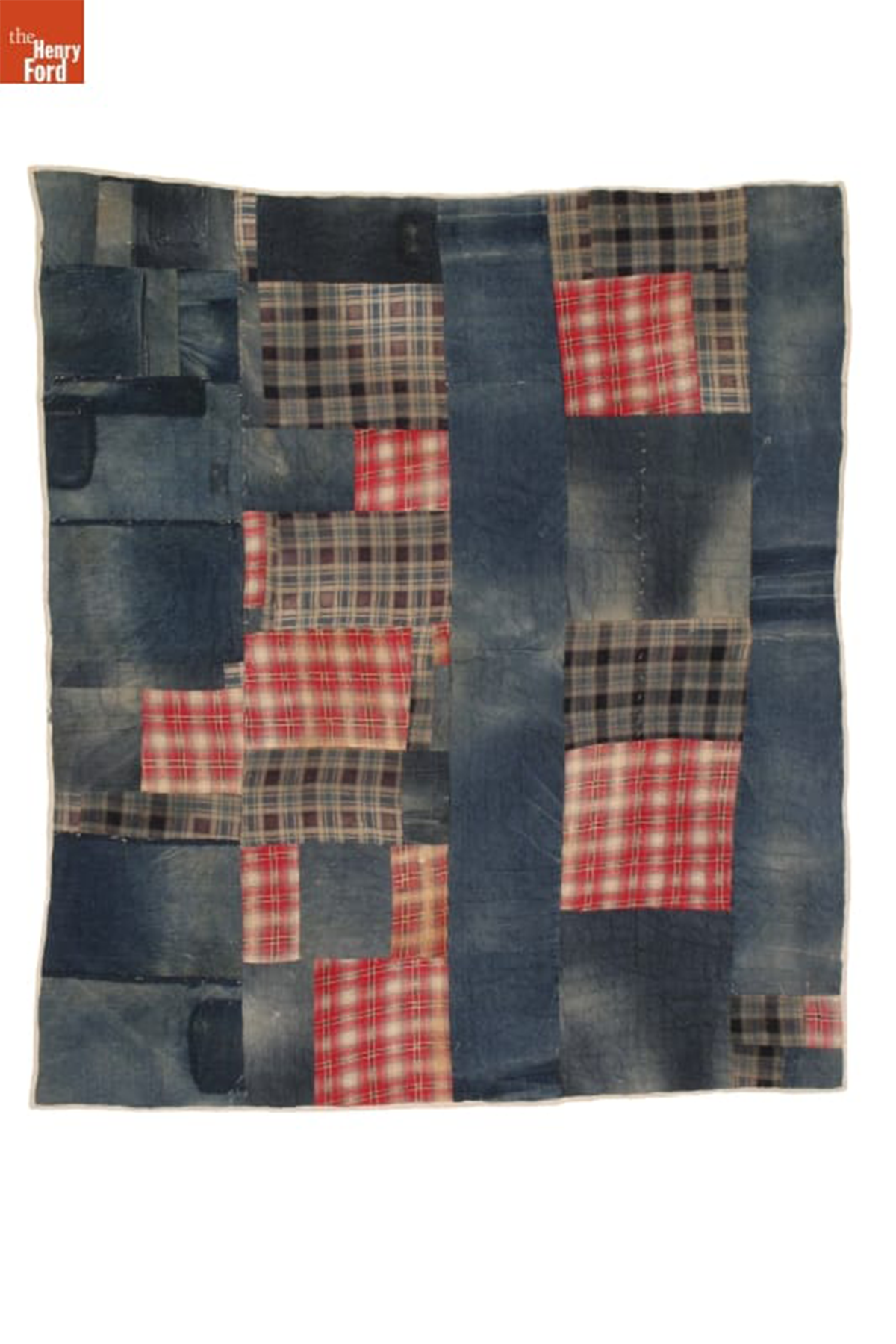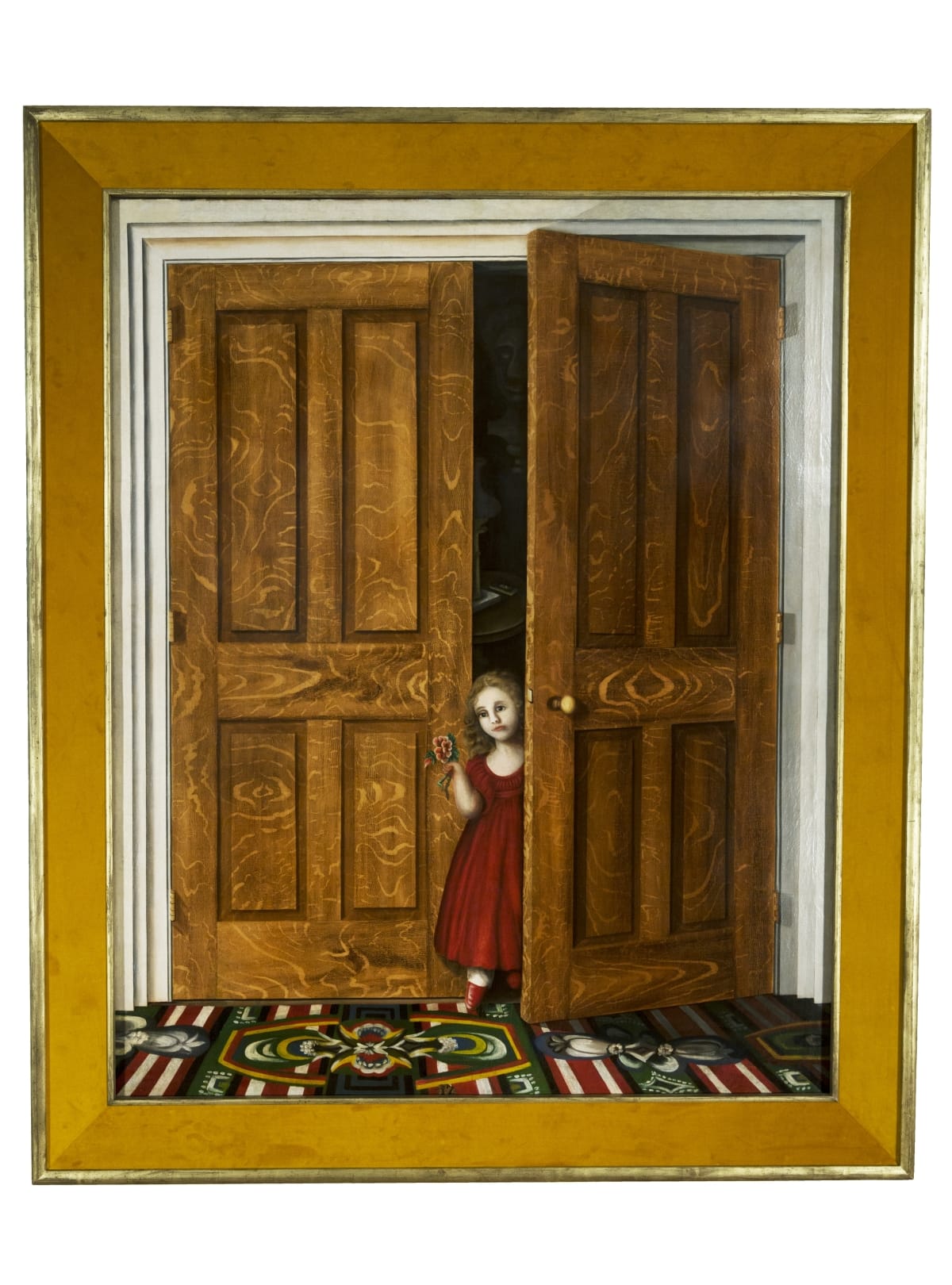A Wooden Quilt for Big Mama
In 2023, The Henry Ford acquired an incredible piece of art: a wooden sculpture by New Orleans artist Jean-Marcel St. Jacques, entitled “A Wooden Quilt for Big Mama.” The wooden quilt weaves together many threads from both St. Jacques's own family history and the stories already told in the institution's collections.
 "A Wooden Quilt for Big Mama" by Jean-Marcel St. Jacques, 2023 / THF197819
"A Wooden Quilt for Big Mama" by Jean-Marcel St. Jacques, 2023 / THF197819
Jean-Marcel St. Jacques is a twelfth-generation Louisiana Afro-Creole. In the 1970s, his family left Louisiana for California, hoping to escape the racial oppression they faced in the South. Looking to reconnect with his family's roots, in 2004, St. Jacques moved back to the Tremé neighborhood of New Orleans, purchasing a former boarding house that had been owned by a woman known to the community as Mother Sister. One year later, however, Hurricane Katrina ravaged the Gulf Coast, particularly New Orleans. St. Jacques's home, along with many others, was severely damaged.
St. Jacques describes how the storm became a defining moment in his life, writing: “The last decade and a half of my life and work has been defined by the aftermath of Hurricane Katrina. The force of nature that blew the roof off of my house and forced me into a silent meditation and communication with my ancestors.” Using wood and other architectural fragments he salvaged after the disaster, St. Jacques began creating sculptural wooden art pieces -- doors, wall hangings, and his larger “quilts” — piecing together fragments and hardware, adding vibrant colors, and weaving in references to his family history. His great-grandmother Laura Agnew had been a quiltmaker, while his great-grandfather had been a junk man, gathering and reselling pieces he found, as well as a hoodoo man, practicing syncretic spirit work. St. Jacques considers his workshop to be “an ancestor shrine,” and keeps his great-grandmother's quilts and great-grandfather's tools nearby as he works.
 Detail from "A Wooden Quilt for Big Mama,'' featuring a portrait of Laura Agnew, the artist's great-grandmother / THF197824
Detail from "A Wooden Quilt for Big Mama,'' featuring a portrait of Laura Agnew, the artist's great-grandmother / THF197824
While every one of his pieces honors his family history, St. Jacques wanted this piece to be a special tribute to his great-grandmother, whom he called “Big Mama.” Amongst the hardware and painted wood blocks that make up the piece, there is a printed portrait of her tucked in the upper right-hand quadrant.
St. Jacques's wooden quilt not only connects to his great-grandmother's quilting practice, but to the practice of other quilters already represented in The Henry Ford's collections — particularly the work of quiltmaker Susana Allen Hunter.
Susana Hunter lived in Wilcox County, an impoverished, rural area of Alabama. She was an improvisational quilter, making up her quilt designs as she went along, often using material taken from clothing and fabric she and her family used, as well as material given to her by others. The quilt below features fabric that likely came from the clothing her husband Julius wore as a tenant farmer — denim overalls and flannel shirts — and is backed with material from mule feed sacks. The quilt not only reflects Hunter's improvisation and creativity, but also captures the history of her family through the physical material — much like St. Jacques's wooden quilt.
 Strip Quilt Made of Work Clothes by Susana Allen Hunter, 1965-1970 / THF73636
Strip Quilt Made of Work Clothes by Susana Allen Hunter, 1965-1970 / THF73636
Acquiring this wooden quilt continues The Henry Ford's long tradition of collecting American folk art. Henry Ford's personal interest in what we would today consider folk art created the foundation for a collection that now stands at nearly 2,000 pieces, and includes works by such noted artists as George Washington Mark (1795-1879), Ammi Phillips (1788-1865), and William Matthew Prior (1806-1873). St. Jacques's work further enriches this collection, updating and diversifying it in a way that honors the folk art tradition.
 "Opening the Door," considered painter George Washington Mark's masterpiece, is one of the highlights of The Henry Ford's folk art collection. / THF172048
"Opening the Door," considered painter George Washington Mark's masterpiece, is one of the highlights of The Henry Ford's folk art collection. / THF172048
Every object in The Henry Ford's collection tells a story about past lives, be it directly via pieces connected to specific individuals, or more generally with objects that demonstrate life in different time periods. It is a special honor to be the institutional home for a piece like “A Wooden Quilt for Big Mama” — a piece that honors the life of the artist, his family, and his community — and to share with the public the rich stories it holds.
Rachel Yerke-Osgood is an associate curator at The Henry Ford.

